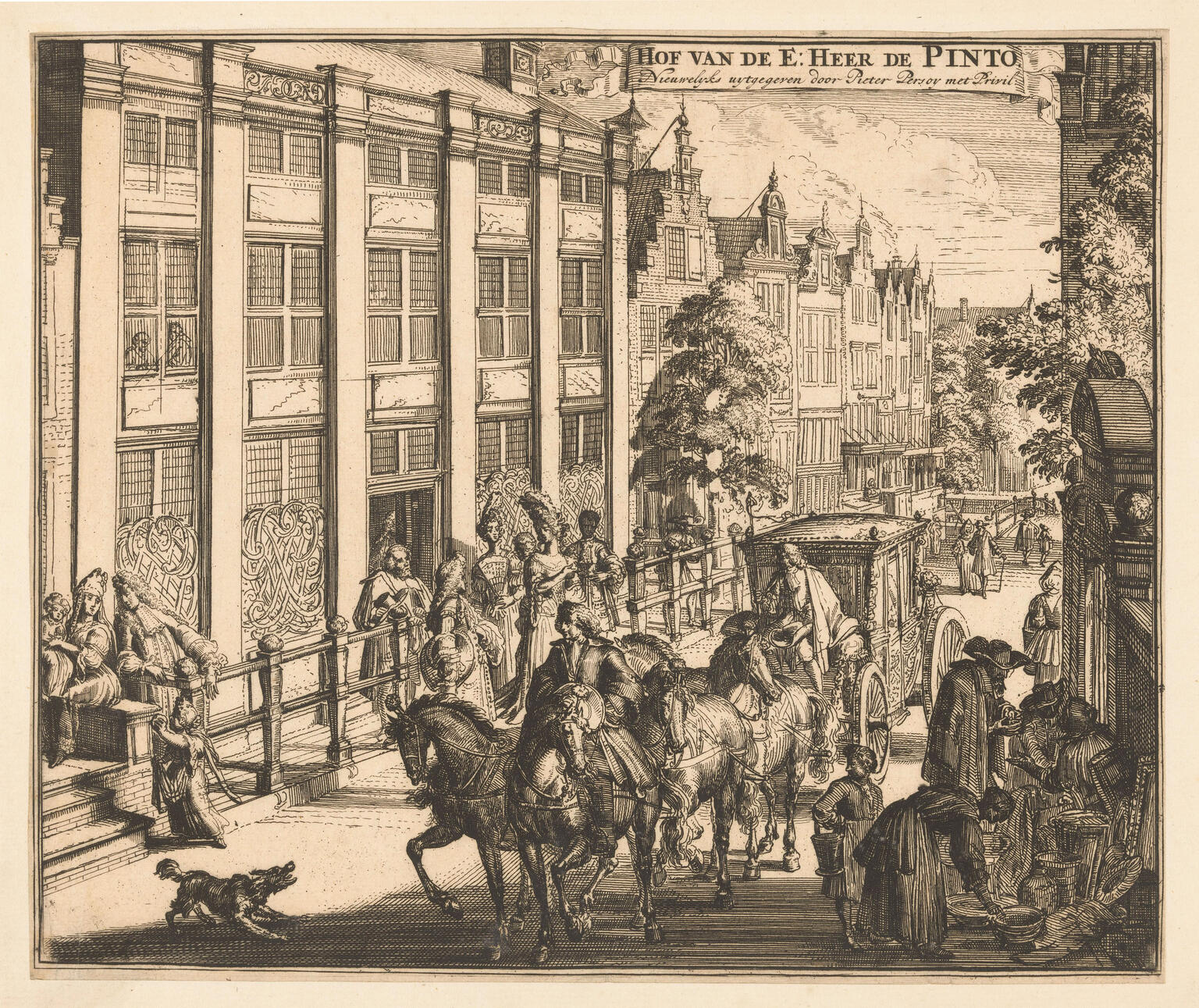The de Pinto Family House
Romeyn de Hooghe
17th Century
The de Pinto family were wealthy merchant bankers who lived in Amsterdam from the seventeenth century on. In the Iberian Peninsula, members of the family converted to Christianity at the end of the fifteenth century, but in Amsterdam they began to practice Judaism openly. In 1651, the family purchased an impressive mansion on Sint-Antoniesbreestraat, Huis de Pinto (“de Pinto House”), which today houses offices and public services. Other members of the family settled in Syria, South America, and the United States. The artist Romeyn de Hooghe portrayed scenes of Jewish life in Amsterdam during this period.
Credits
Romeyn de Hooghe, ca. 1695. House of David de Pinto at the Sint-Antoniesbreestraat in Amsterdam. Rijksmuseum, Amsterdam.
Published in: The Posen Library of Jewish Culture and Civilization, vol. 5.
You may also like
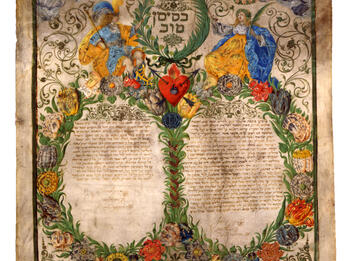
Ketubah (Hamburg)
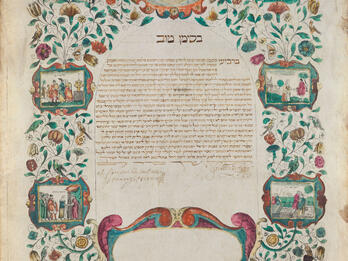
Ketubah (Amsterdam)
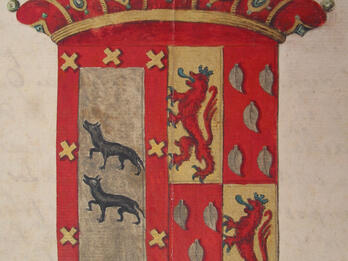
The Arms of Lopez and Suasso: A Jewish Family in 17th-Century Amsterdam

The Coat of Arms of Lopez and Suaço
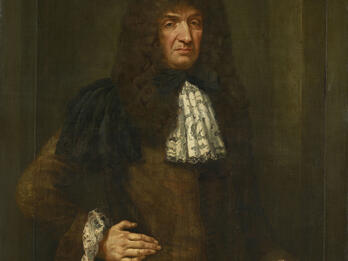
Portrait of Don Antonio Lopes Suasso

The Amsterdam Residence of Jeronimo Nunes da Costa (Mazes Curiël)
d

Related Guide
Jews on the Move: Early Modern Jewish Migration
The geography of Jewish settlement shifted dramatically in the sixteenth and seventeenth centuries.

Related Guide
Community, Congregation, and Self-Government
The early modern period witnessed flourishing Jewish self-governance across the diaspora, as economic utility to host nations enabled unprecedented communal autonomy.
Creator Bio
Romeyn de Hooghe
Active in the Netherlands, Romeyn de Hooghe was a prolific engraver, caricaturist, painter, and sculptor who produced over 3500 prints. His graphic political satires are considered the first of their kind.
You may also like

Ketubah (Hamburg)

Ketubah (Amsterdam)

The Arms of Lopez and Suasso: A Jewish Family in 17th-Century Amsterdam

The Coat of Arms of Lopez and Suaço

Portrait of Don Antonio Lopes Suasso



